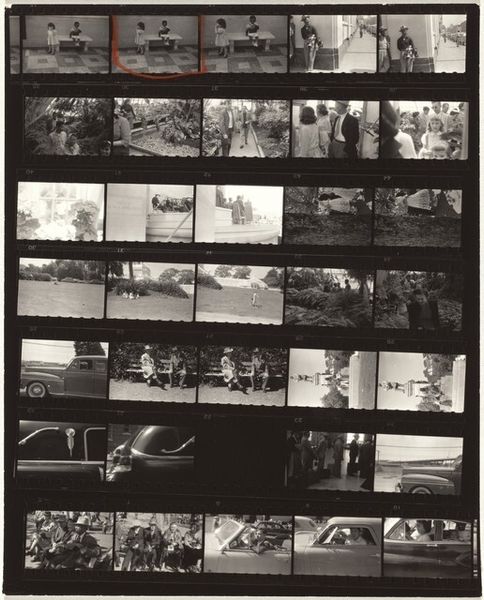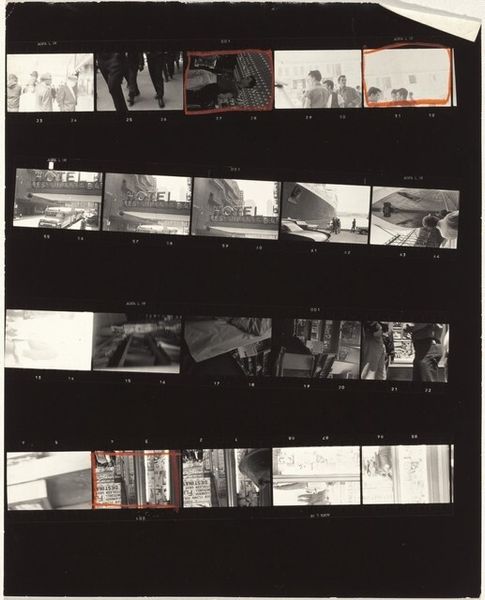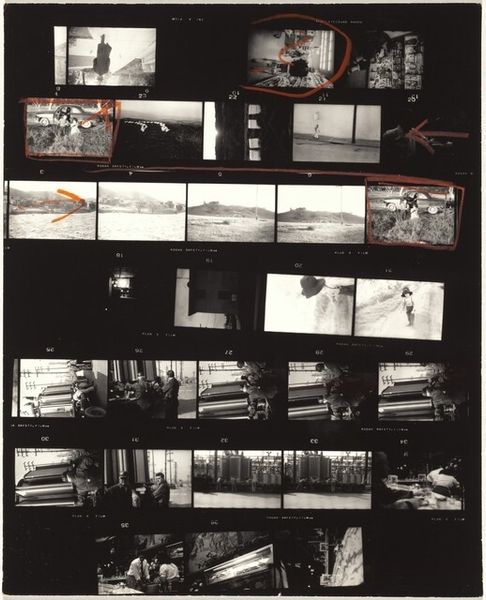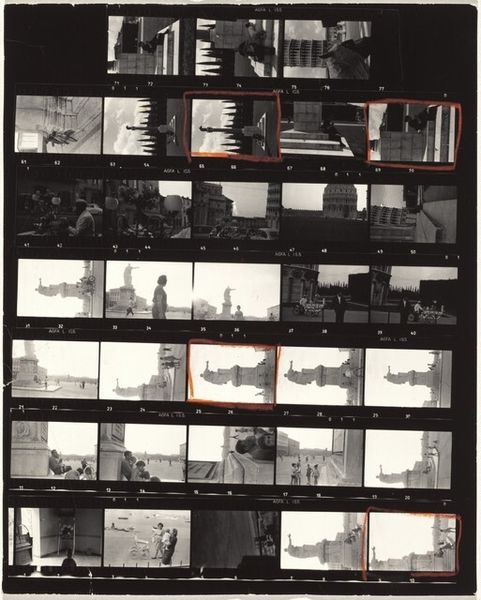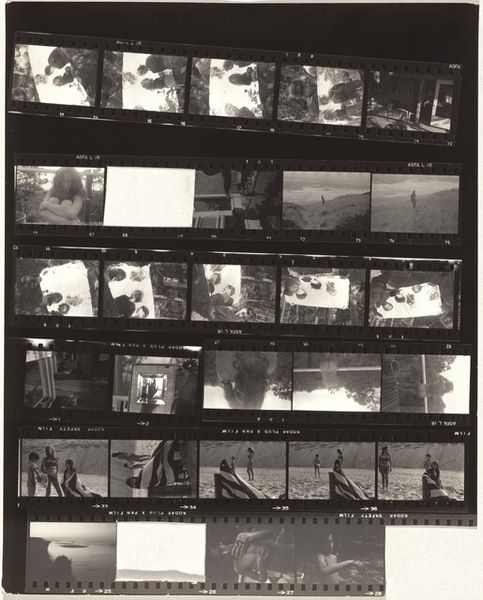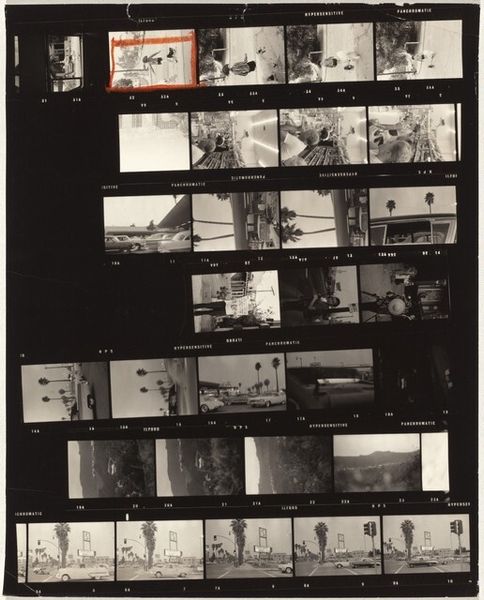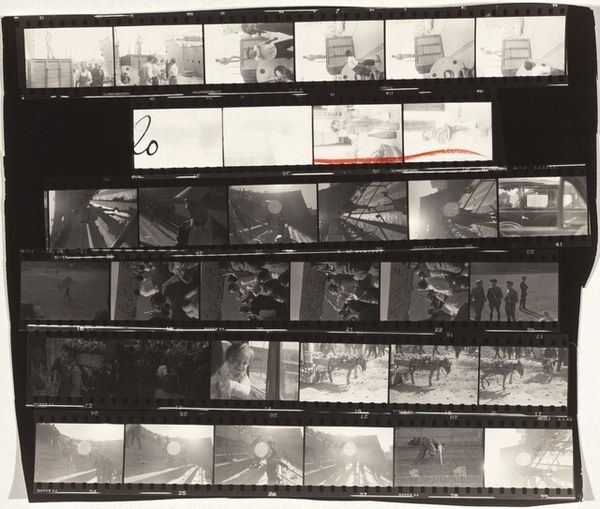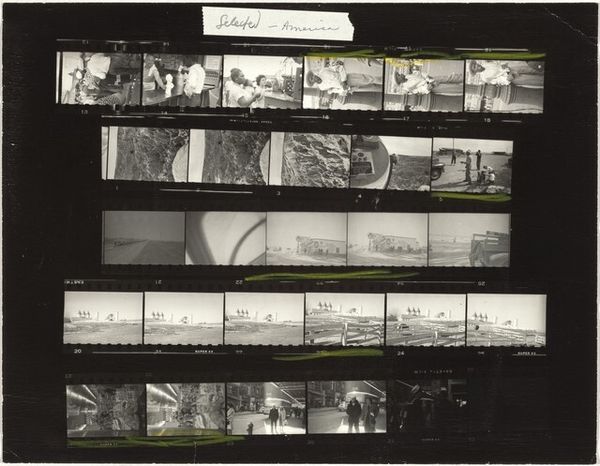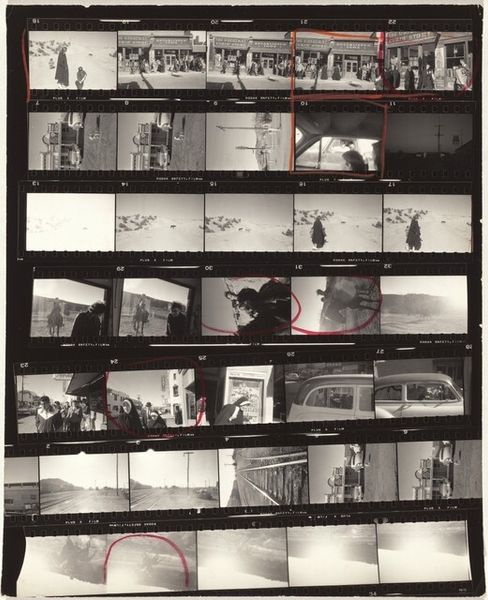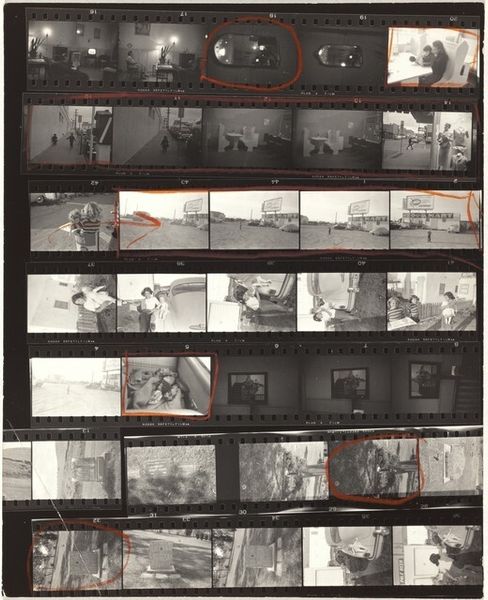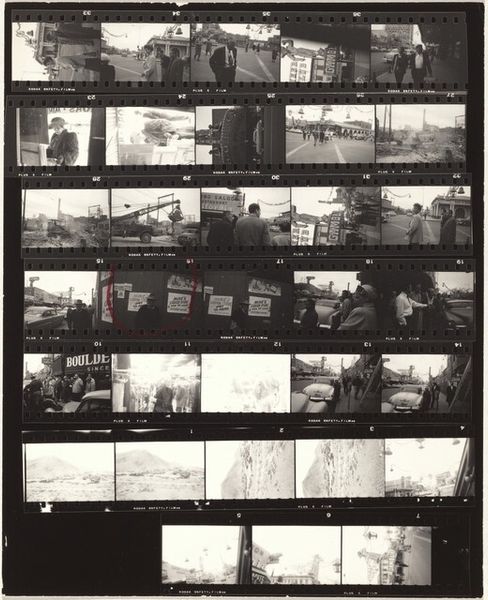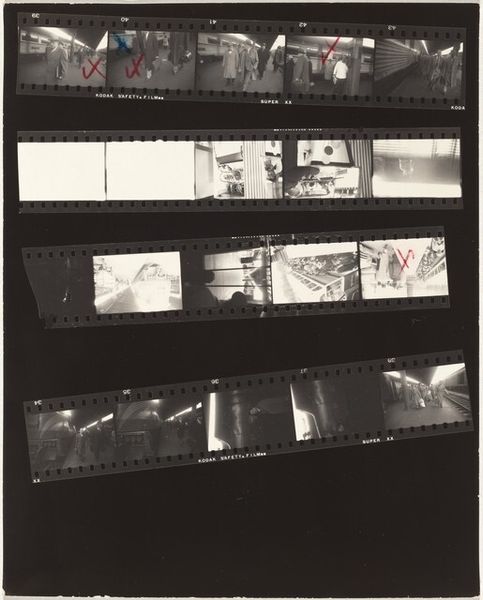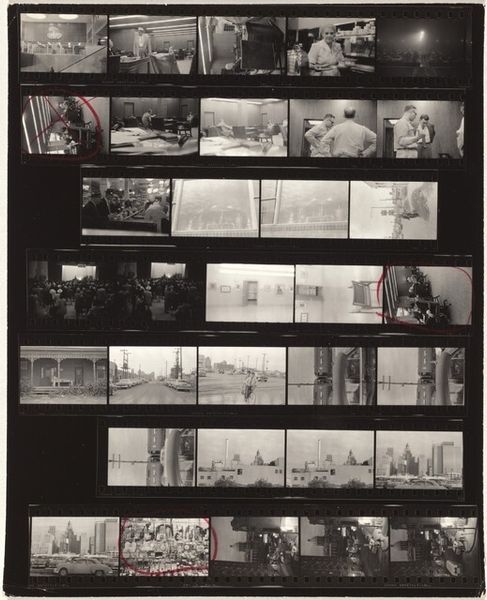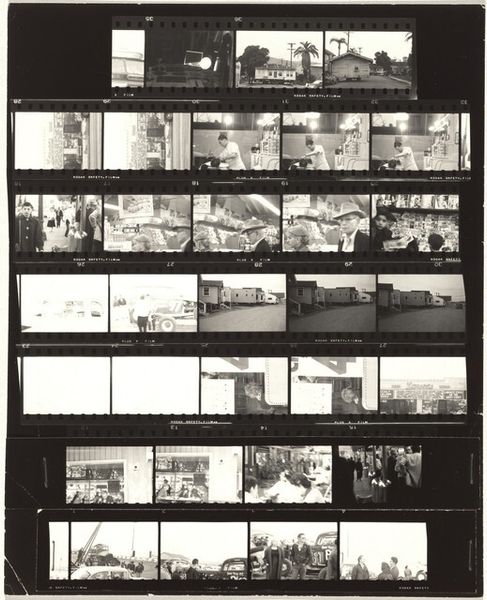
Guggenheim 559A--Stock car races, Palm Springs, California 26 - 1956
0:00
0:00
photography, gelatin-silver-print
#
film photography
#
landscape
#
street-photography
#
photography
#
gelatin-silver-print
#
cityscape
#
film
#
modernism
Dimensions: overall: 25.3 x 20.5 cm (9 15/16 x 8 1/16 in.)
Copyright: National Gallery of Art: CC0 1.0
Curator: Robert Frank’s gelatin silver print, "Guggenheim 559A—Stock car races, Palm Springs, California," dated 1956, offers us a sequence of moments, a film strip of life around a stock car race. Editor: My initial impression is…restless. The grittiness of the gelatin silver process heightens that. You can practically smell the motor oil and feel the sun beating down. It is evocative and almost dizzying! Curator: I'm drawn to the formal elements. The visible sprocket holes frame each image. You feel the artist's presence, choosing, capturing...revealing. These races, these cars, weren’t just metal and engines; they represented aspiration. Editor: Exactly! There's something beautifully imperfect about it. Gelatin silver printing was integral to democratizing photography in that era; mass production techniques made it accessible, breaking down the elitist, artisanal barriers around the medium itself. And Frank uses this commonality as a subversive act, making a seemingly mundane event sing with the quiet desperation of post-war America. Curator: It’s a visual poem of fleeting moments, like an old reel found tucked away. Each frame, even the seemingly blank ones, pulsates with what’s left unsaid. They become tiny portals. Editor: Think about the physical labor involved, though, the manipulation of chemicals in the darkroom, each image developed in sequence, and this is also why it's powerful. The work highlights that tension between mass consumption and the individuality of handcrafting. This isn't some pristine landscape; this is asphalt, labor, and the social contexts within everyday life, all pressed onto film. It speaks to the ordinary as a cultural statement. Curator: Ordinary moments elevated. You see not just the cars, but the hopes and anxieties tied up within them. And the physicality that shaped these representations becomes imbued with these nuances. The photograph embodies our yearning, I guess. A fleeting need for freedom, caught on film, processed with care...It asks us to find the profound within what feels quotidian. Editor: Yes! It really exposes this underlying theme of our obsession with velocity, with moving forward, framed using processes that mirror the period in question. The medium, in a way, serves as the ultimate material statement. Curator: Looking at it that way helps the heart open.
Comments
No comments
Be the first to comment and join the conversation on the ultimate creative platform.
